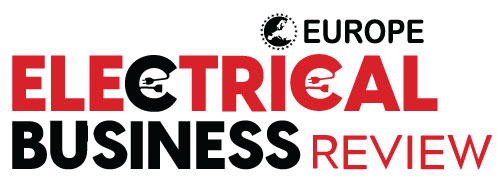Thank you for Subscribing to Electrical Business Review Weekly Brief
I agree We use cookies on this website to enhance your user experience. By clicking any link on this page you are giving your consent for us to set cookies. More info
Modernizing Power Solutions: How 3-Phase Converters Are Shaping Today's Industries
The global industrial landscape is experiencing a technological transformation, with high-quality 3-phase converters playing a crucial role.

By
Electrical Business Review | Monday, February 17, 2025
Stay ahead of the industry with exclusive feature stories on the top companies, expert insights and the latest news delivered straight to your inbox. Subscribe today.
The global industrial landscape is experiencing a technological transformation, with high-quality 3-phase converters playing a crucial role. As industries become more sophisticated and energy-efficient, these converters are essential for achieving operational excellence. Technological advancements, trends, benefits, and challenges reshape the power conversion landscape.
The technological landscape for 3-phase converters has advanced significantly in recent years. The core advancements focus on improving efficiency, reliability, and ease of integration with modern industrial systems. Key innovations in 3-phase converter technology include developing advanced semiconductor materials, more intelligent control systems, and more compact designs.
Silicon carbide and gallium nitride are replacing traditional silicon-based converter components. These next-generation materials offer higher power density, improved heat dissipation, and enhanced energy efficiency. They are suitable for demanding industrial applications, ensuring converters operate at peak efficiency while consuming less energy.
The integration of digital controls has made converters even more adaptable to industrial applications of vast diversity. Such digital control systems would enhance load regulation, enable better fault detection, and allow performance in real-time monitoring within the system. Advanced digital controllers can optimize converter performance based on changing power demands and adjust the system to maximize energy savings and operational efficiency.
The miniaturization of 3-phase converter designs is a huge step forward for the industry because it allows more power to be integrated into smaller units, making them lighter, more energy-efficient, and easier to integrate into existing systems without significant infrastructure modifications.
With the penetration of renewable energy integration and rapid growth of electric vehicles in significant economies, the 3-phase converter market is significantly changing. Renewable sources such as solar and wind power are gaining prominence, and the requirement for high-quality converters for power distribution management is increasing. These converters allow the seamless blending of renewable energy sources with existing grids, offering smooth power conversion to industries.
The rising requirement for electrification in the automotive, transportation, and manufacturing industries is fueling the adoption of 3-phase converters, and increasing electric vehicle numbers and electrified machinery demand stronger power conversion solutions. High-quality 3-phase converters are vital in managing charging infrastructure and smooth motor operation in most industrial applications.
With the advent of Industry 4.0, which includes smart factories and interconnected systems, there is a greater demand for advanced 3-phase converters that optimize power distribution, interact with other devices, aid in remote monitoring, diagnostics, and predictive maintenance, reducing operational costs and preventing lost time.
Higher-quality 3-phase converters bring various vital benefits to industries in almost all sectors. They offer higher energy efficiency because three-phase systems are inherently more energy-efficient than single-phase systems due to their smoother and more uniform electrical power distribution. The converters ensure that the industries can enjoy this advantage, cutting down their energy usage and consequently reducing the overhead cost of the operation.
The reliability of modern 3-phase converters has dramatically improved over time. Thanks to advanced semiconductor materials, digital control systems, and real-time monitoring, converters can function with a very low risk of failure. This is critical in industries where downtime leads to costly disruption and lost production.
High-quality 3-phase converters support a wide range of industrial machines and huge motors, which require a three-phase power supply for effective operation. By ensuring machines receive the appropriate power supply, businesses can extend the life of their equipment, reducing the need for costly equipment replacements and improving asset utilization.
High-quality 3-phase converters enable industries to integrate renewable energy sources like solar, wind, or other renewables into their existing systems, converting variable power output into stable three-phase electricity. This is crucial for businesses aiming to reduce their carbon footprint and achieve sustainability goals.
Though many benefits are presented, the 3-phase converter industry has limitations. The primary concern is the complexity of installation into existing structures. In some cases, updating older systems using new 3-phase converters entails a massive equipment and labor input, which would be a setback for some firms.
There's an increasing need for more energy-efficient solutions; hence, there's a problem with performance against cost. Highly efficient 3-phase converters, which provide significant advantages, might be too expensive for some small and medium enterprises to implement upfront. Thus, manufacturers should reduce the price and make such technologies accessible yet not compromise their performance.
Modern 3-phase converters, equipped with digital controls and monitoring systems, require regular inspections and troubleshooting to maintain their peak condition. Failure to do so can lead to decreased performance or system failure, resulting in costly downtime.
The technology is further developing, which requires constant observation of such development and provision for compatibility with the emerging system. Electric vehicles, renewable energy, and smart factories are increasing demand for highly adaptable converters. Manufacturers are compelled to innovate further and ensure that their products are future-proof for the growing needs of an industry.








